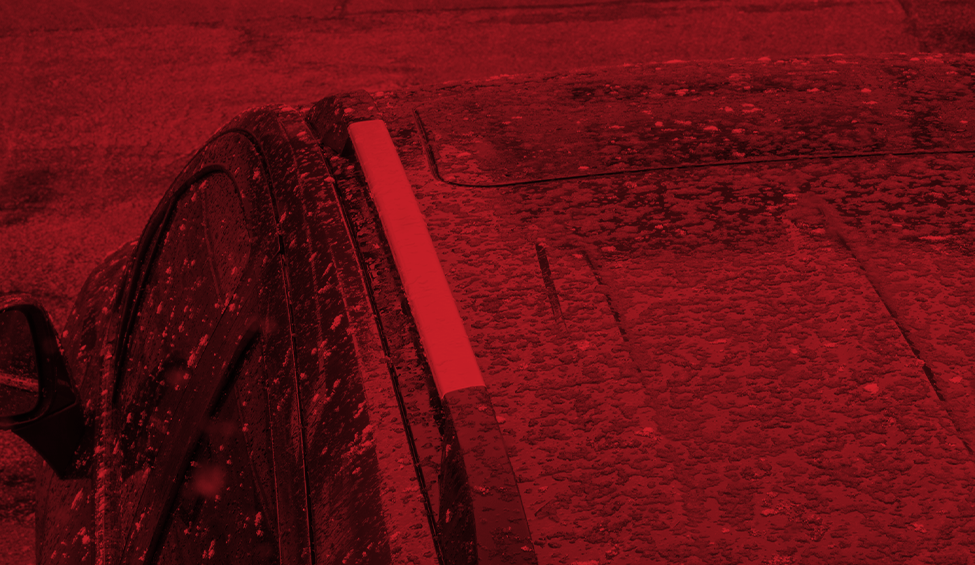You’re driving through a thunderstorm one day when your car starts getting pelted by marble-sized hail. Not only can hailstones leave noticeable pits and dents in your car’s metal surfaces, larger chunks can crack your windshield and cause serious damage. And, if you live in “Hail Alley” states like Texas, Oklahoma, Nebraska, and Kansas, your vehicle is at greater risk for getting damaged in a hailstorm. Fortunately, auto body and glass repair shops today have the capabilities to cost-effectively fix most vehicles even after they’ve suffered hail damage.

How Do Auto Body & Glass Repair Shops Fix Hail Damage?
“DIY” HAIL DAMAGE REPAIRS AREN’T RELIABLE
There are a lot of Do-It-Yourself (DIY) hail-damage repair ideas floating around the Internet, like using a hairdryer, leaving your vehicle out in the hot sun, or applying ice to the dents and dings. But in most cases those methods not only don’t work, they can even cause more serious and permanent damage to your car’s exterior that will probably lower its resale value. Your best bet is to contact your insurance company and then promptly take your vehicle to a local body shop to have it inspected and repaired by professionals.
PROFESSIONAL HAIL DAMAGE REPAIRS
In many instances, a local body shop can remove hail-related dents and dings by using one of two methods: conventional or paintless dent repairs:
Conventional Repairs
These are some of the conventional ways that technicians repair hail-damaged body panels:
Remove and replace
When the damage is more serious, bolted-on panels can be removed, replaced and then repainted to match the rest of the body.
Finish glazing
This is used for more minor damage, and involves sanding the paint down slightly and then filling the dented area with some glaze putty. Once the putty dries, it’s sanded and then ready for painting.
Body filler
Similar-to finish glazing, the paint is completely removed down to the metal, the dent filled with body filler, sanded and then repainted. This method works well for small to medium-sized dents.
Traditional heat repair
This technique is used on older vehicles with thicker metal or most newer vehicles with larger dents. Heat is applied in a circular motion using an oxyacetylene torch to expand and restore the metal. Once the metal cools, the surface is then repainted.
PAINTLESS DENT REPAIRS
As a newer alternative, paintless dent repairs (PDR) eliminate the need for doing any bonding, sanding or repainting. Instead, the technician manipulates the metal from the inside out to reshape and restore the damaged panel. PDR is most effective for smaller dings and dents, but larger ones can also be repaired if the paint and metal are still intact. PDR is also gaining in popularity with drivers and insurance companies because of it:
- Costs less than conventional methods
- Has a faster turnaround time
- Doesn’t use potentially hazardous chemicals and fillers
PROFESSIONAL WINDSHIELD REPAIRS
Hail can also leave pits, chips, and cracks in your windshield. Some drivers choose to ignore those, but even a small crack can place you at serious risk if you’re involved in an accident. When you take your vehicle to an auto glass repair shop, they will recommend one of these repairs based on the damage’s severity:
Crack repairs
If possible, your windshield will be repaired by filling the affected area with a curable resin that visually matches the glass. The purpose of a crack or pit repair is to restore the windshield’s strength and structural integrity.
Total replacement
In some cases, the size and shape of the crack prohibits a simple repair. Instead, your entire windshield will be completely replaced to keep you and your passengers safer.
Most auto glass repair shops offer convenient mobile services, and many auto insurance policies cover windshield repairs and replacements- including those caused by hail.
